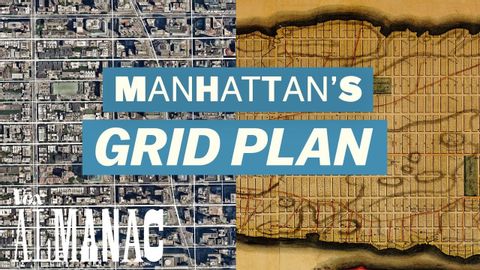曼哈顿的电网计划来自何处(Where Manhattan’s grid plan came from)
joey joey 發佈於 2021 年 05 月 18 日  沒有此條件下的單字
沒有此條件下的單字US /ˈɛpɪˌsod/
・
UK /'epɪsəʊd/
- n.插曲;集;(電視或廣播節目的)一集;事件;一段時期;(疾病的)發作
US / dɪˈbet/
・
UK /dɪ'beɪt/
- n. (c./u.)辯論;爭論;辯論會
- v.t./i.思考;盤算;辯論
US /ˈbesɪkəli,-kli/
・
UK /ˈbeɪsɪkli/
US /ˈpræktɪkəl/
・
UK /ˈpræktɪkl/
- adj.實際的;實用的;實際的;務實的
- n.實作;注重實踐的人

